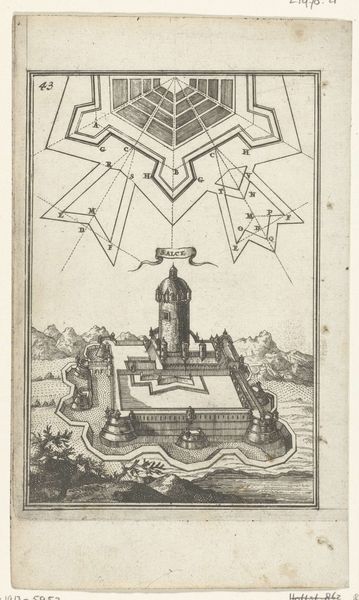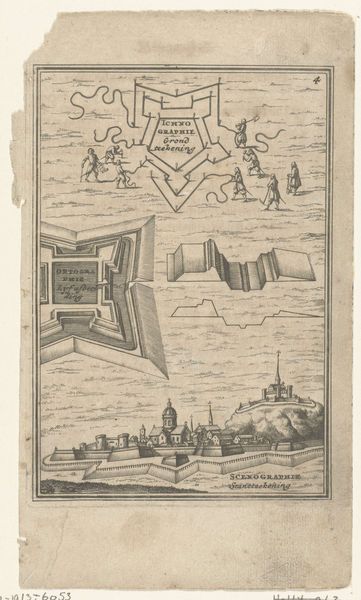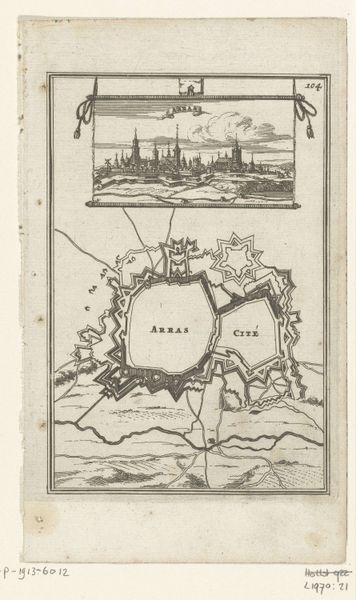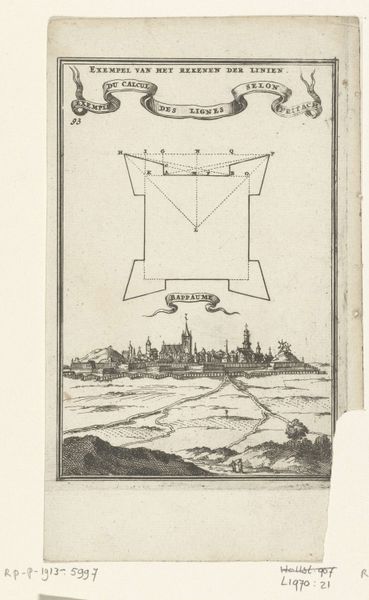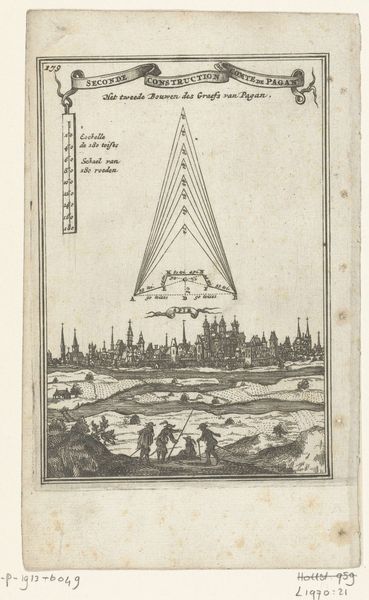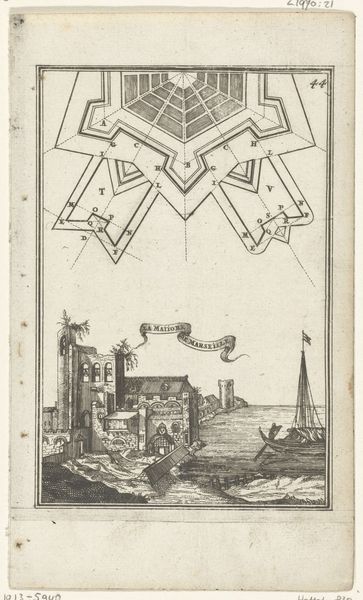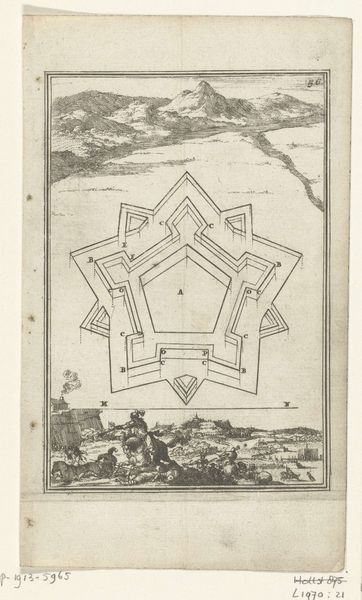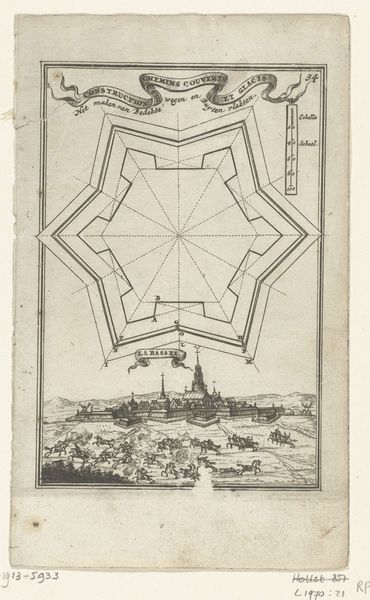
Illustratie voor 'Den Arbeid van Mars' van Allain Manesson Mallet 1672
0:00
0:00
romeyndehooghe
Rijksmuseum
drawing, print, ink, engraving
#
drawing
# print
#
ink
#
line
#
cityscape
#
history-painting
#
engraving
Dimensions: height 185 mm, width 111 mm
Copyright: Rijks Museum: Open Domain
This engraving by Romeyn de Hooghe, made to illustrate Allain Manesson Mallet's 'The Works of Mars,' presents a town beneath complex geometric fortifications. These shapes are not merely decorative; they are emblematic of the period's military strategy, transforming the landscape into a chessboard of power. The star-shaped fortresses above are no accident; similar geometric patterns recur throughout history, even in ancient cosmologies mapping the heavens. Consider how medieval city plans mirrored sacred geometry, reflecting a desire to impose order upon chaos, just as these fortifications aim to control territory. It is not merely about defence, but about a psychological assertion of dominance, a visual echo of humanity’s struggle to master its environment. This image resonates with a deeply ingrained impulse to shape, control, and defend. The city becomes a psychological battleground, projecting our deepest fears and desires onto the land. The cyclical dance of defense and aggression, mirrored in these forms, continues to evolve, reappearing in modern urban planning and technological interfaces, a testament to the enduring power of symbols across time.
Comments
No comments
Be the first to comment and join the conversation on the ultimate creative platform.
